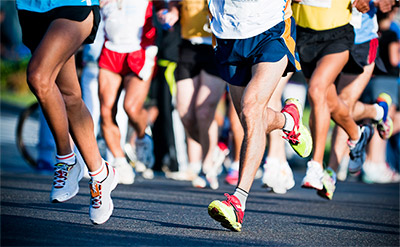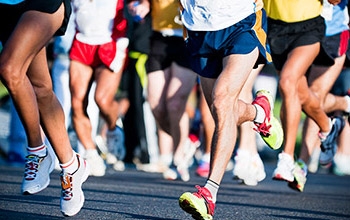 Establishing good running habits are very important when training for a marathon or else you might get injured. A couple of weeks into your training is when all the work you have done starts to catch up with you. The injuries will feel like they came out of nowhere – One minute you’re running great and suddenly your IT band explodes in pain, or you pull your calf muscle, or get a sudden hamstring injury.
Establishing good running habits are very important when training for a marathon or else you might get injured. A couple of weeks into your training is when all the work you have done starts to catch up with you. The injuries will feel like they came out of nowhere – One minute you’re running great and suddenly your IT band explodes in pain, or you pull your calf muscle, or get a sudden hamstring injury.
The truth is these injuries do not come out of nowhere. The seeds of injury are planted almost from the first week of training. How do you build injury-prevention habits into your training from day #1?
Following these tips will set you up for running safely and to obtain the performance that you are looking for:
- Create a structured training program: It is probably best to seek advice from a coach or an experienced runner to make sure that you are not overtraining or doing too little so you can get in peak physical condition for the race.
- Run at a comfortable pace: You should be running at an easy pace building your stamina gradually with no more than a 10% increase in your running distances per week. Running at about 70-80% of maximum heart rate is ideal to improve your cardiovascular fitness. Make sure your bones, hip, knees, are adapting well to the stresses placed on them during the run.
- Foam rolling: Use a foam roller to roll your calves and hamstrings once or twice a week. Doing this right from the beginning establishes the baseline of what your muscles feel like when they are normal and healthy. So, when you start feeling the pre-injury muscles tightness while using the roller, you are in a better position to read the situation correctly and give yourself a day off to allow for muscle recovery rather than go for tomorrow’s long run.
- Focus on form: A lot of injuries are a result of tired running and sloppy mechanics resulting in unstable hips, knees, and ankles. Focus on improving yourself by performing running drills in every session ensuring your running is on point. This way you finish your training program having improved your running technique and not just surviving the weeks and months before the race.
- Don’t aim for perfection: It’s okay if you fall a little short of your target in terms of the distance or speed during a run. Trying to strictly follow your training all the time may cause you to stop listening to real-time feedback from your body increasing your risk of injury.
- Vary your training: Mix up your routine by adding interval workouts, speed runs, hills, tempo runs, and long runs so you are well prepared for your running event.
- Practice: All aspects of the race must be practiced including running at the right pace as well as drinking and eating during a run. Getting some extra calories in will help prevent you from hitting the wall during the race.
- Cross training: Allow your legs to recover from the pure running side of things by doing some other types of cardiovascular training such as cycling and swimming that are less stressful on your knees and hips.
- Nutrition: Throughout your training eat a well-balanced diet with lot of fresh fruits, vegetables, and carbohydrates like sweet potatoes or rice to keep your energy levels high as well as proteins, vitamins and minerals to aid the recovery process and improve your performance.
- Recovery: Try to get at least 8 hours sleep every day as part of your training. Also, you should have 1 or 2 days of rest per week depending on how fast your body recovers after a run.
Dr. Frisch is a specialist orthopedic surgeon focusing on minimally invasive hip and knee joint replacement as well as regenerative treatments for enhanced healing. He believes in creating a very personalized experience with the highest level of service. For all appointments & inquiries, please contact our offices located in Rochester, River District, and Tawas City, MI.







